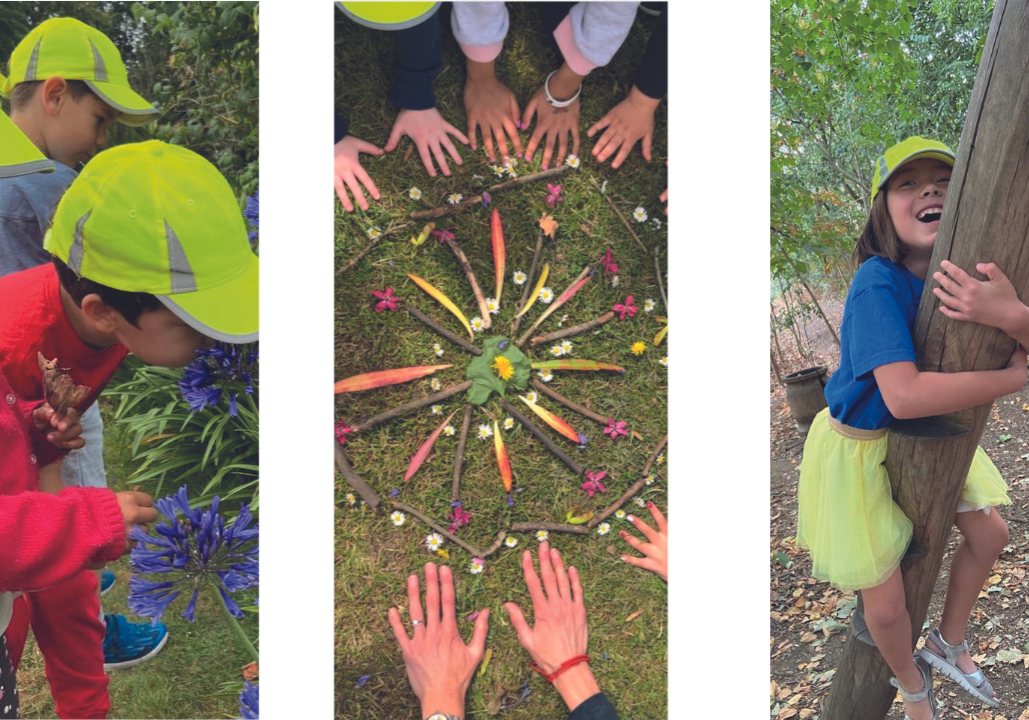
Mindfulness and nature
The importance of mindfulness and nature for today’s children (and adults!). By Ciaran Ivanovic
Children (just like adults) tend to rush from one thing to the next. While there’s no harm in rushing occasionally, constantly rushing through life provides us with little time to reflect on what’s going on inside. This can lead us to feeling overwhelmed or anxious. But when we learn how to press ‘pause’ we are giving ourselves time to think about what’s going on inside us. This is empowering as we can then decide what we need in that moment (a break, fresh air, a few breaths to re-centre). Two of the most effective ways of pressing ‘pause’ are practicing mindfulness and spending time in nature – both are easily accessible and free!
The natural world
Let’s begin with nature. Research shows that within the first three minutes of stepping into nature our heart rate drops, our stress levels decrease, and our brains relax and recharge (thereby improving concentration). Imagine that: just by looking at nature images we feel relaxed, happy and calm.
This is perhaps why so many global companies such as Google have green images or spaces built into their offices. Doctors are even prescribing ‘green time’ to children and teenagers with ADHD and depression as a way of alleviating the symptoms. Nature’s deep sensory experience provides us with a window into the peace and presence that lies within us all.
Consider silences that fall when you take a child on a quiet walk in nature. The child learns to be comfortable being away from the busyness of life, and being alone with their thoughts, knowing they are supported by someone who is introducing them to this experience. When we share these kinds of positive experiences with young children, they are much more likely to seek comfort from these types of outdoor experiences as an adult.
In nature nothing is ‘perfect’; trees can be knobbly, leaves can be crumpled. These ‘imperfections’ can be celebrated and teach us to accept ourselves and to see our own shortcomings as an opportunity for growth.
When we expose children to nature it invites them to be present and engage all of their senses by paying attention to what they smell, hear, touch, see and occasionally, taste. It is important to perceive the world using all of our senses so that we can understand what’s going on around us. The difficulty with today’s children is they are doing this less and less as they engage with the digital world, focusing only on their sense of sight and sound.
This increase of screen time has led to an epidemic of childhood obesity, poor eyesight, sleep apnoea, and social and psychological problems, indicating that the need for nature immersion and other mindful experiences is at an all-time high.
Mindful practices
The good news is there is a plethora of mindful activities that can be practiced in nature. A simple scavenger hunt is a fun and effective way of inviting children to walk mindfully, paying attention to specific items in nature that they can see (perhaps a yellow flower or an interesting looking leaf); hear (a bird chirping or a squirrel scampering); feel (the warm sun on their face) and smell (damp earth or freshly cut grass).
Walking mindfully in nature allows us to feel the deep connection we have with the universe. This can make us feel fulfilled and grounded and helps us develop compassion. Cloud watching is another mindful activity that not only helps children slow down, as they lie back against the earth and gaze up at the sky, but also exercises their brains in a different way by fostering creativity.
Creativity is one of the most important forms of relaxation. Children especially love to spot shapes, letters and animals in the clouds and the ever-changing movement of the sky can be likened to our thoughts and feelings, which also change constantly and never stay the same. This can be reassuring for children, knowing that the trickier thoughts or feelings they may be experiencing won’t stay like this forever.
Ultimately being mindful in nature is an opportunity to marvel at and embrace the little moments in life such as seeing a beautiful sunset or perhaps smelling the sweet scent of a flower. When we learn to appreciate and enjoy small moments like these, we are more likely to feel fulfilled rather than constantly searching for the one big moment in our life that may not happen anyway. With the speed and busyness of today’s world only increasing, the sooner we share these kinds of grounding experiences with our children, the better.
Ciaran Ivanovic is founder of Mindful Kids (mindful-kids.co.uk). Launching this month is the online training programme: Teaching Mindfulness in Nature to Children. Visit the website for more mindfulness and nature practices and workshops for kids or connect via Instagram @mindfulkidslondon


